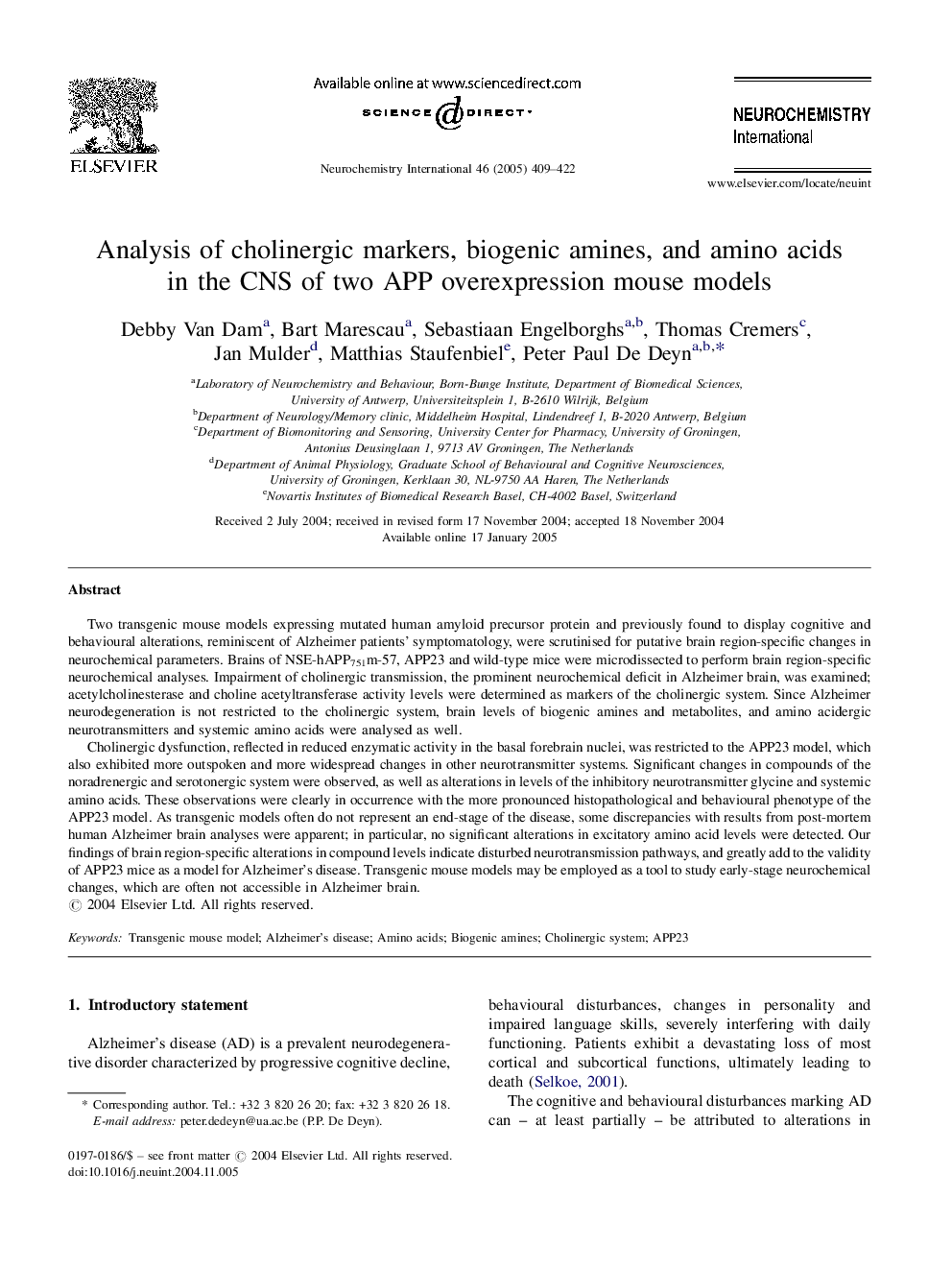| Article ID | Journal | Published Year | Pages | File Type |
|---|---|---|---|---|
| 10958443 | Neurochemistry International | 2005 | 14 Pages |
Abstract
Cholinergic dysfunction, reflected in reduced enzymatic activity in the basal forebrain nuclei, was restricted to the APP23 model, which also exhibited more outspoken and more widespread changes in other neurotransmitter systems. Significant changes in compounds of the noradrenergic and serotonergic system were observed, as well as alterations in levels of the inhibitory neurotransmitter glycine and systemic amino acids. These observations were clearly in occurrence with the more pronounced histopathological and behavioural phenotype of the APP23 model. As transgenic models often do not represent an end-stage of the disease, some discrepancies with results from post-mortem human Alzheimer brain analyses were apparent; in particular, no significant alterations in excitatory amino acid levels were detected. Our findings of brain region-specific alterations in compound levels indicate disturbed neurotransmission pathways, and greatly add to the validity of APP23 mice as a model for Alzheimer's disease. Transgenic mouse models may be employed as a tool to study early-stage neurochemical changes, which are often not accessible in Alzheimer brain.
Related Topics
Life Sciences
Biochemistry, Genetics and Molecular Biology
Cell Biology
Authors
Debby Van Dam, Bart Marescau, Sebastiaan Engelborghs, Thomas Cremers, Jan Mulder, Matthias Staufenbiel, Peter Paul De Deyn,
